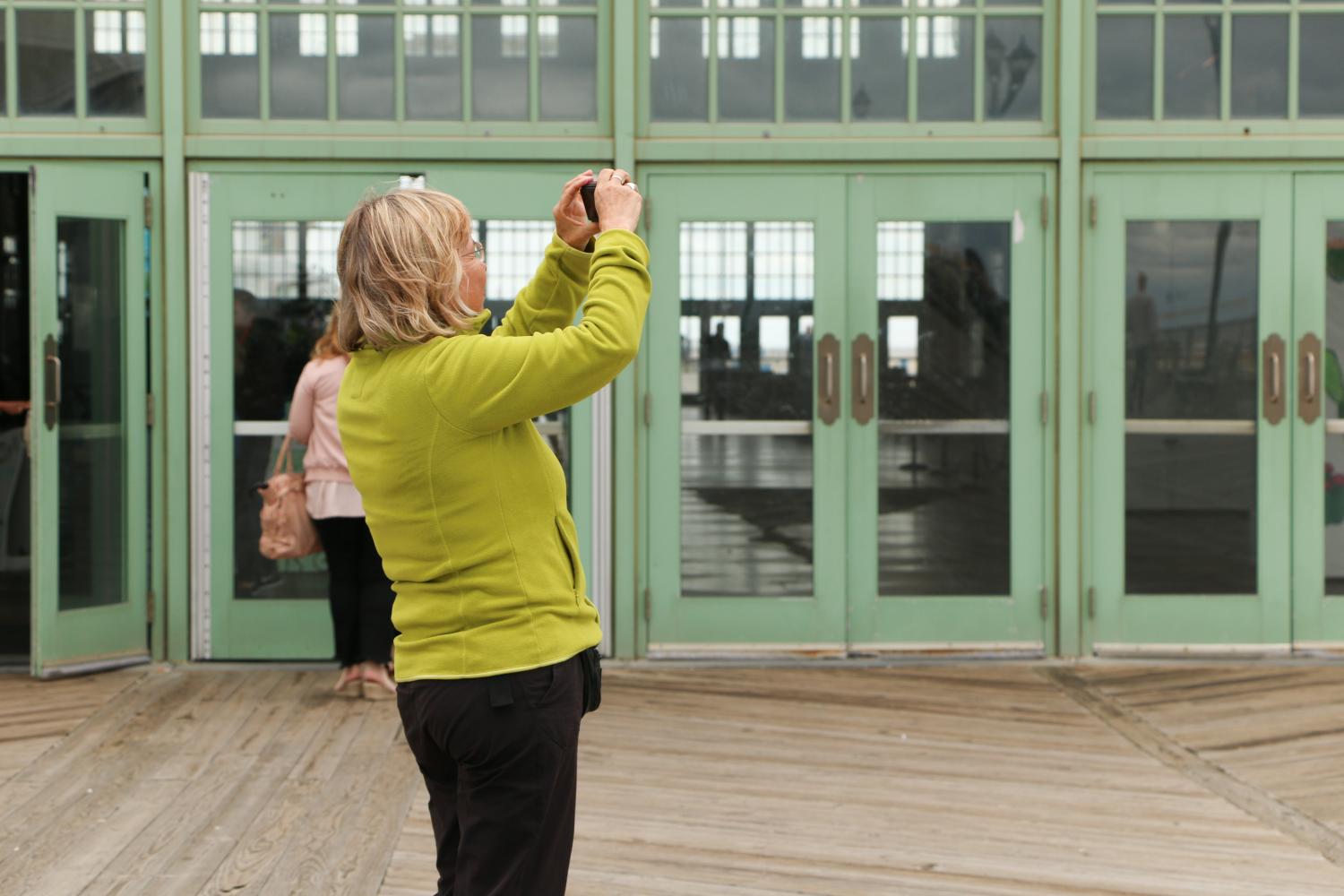Bennie bash – the good, the bad and the rowdy
Tourists – do they ruin or rescue the Jersey Shore?
June 16, 2017
Story by SAMANTHA HOGAN and ALLIE KUO
Photography/Videography by KUO and CATHERINE ESCUETA; Graphics by MATT MILLER; Podcast by HOGAN; Video Editing by LUKE BROWN
Just under 100 million tourists will visit New Jersey this summer, bringing with them lots of suntan lotion and money in their pockets – $618 million for food and drink alone.
That’s only one grain of sand in the economic tide pool, according to the New Jersey Department of Tourism’s study, entitled “The Economic Impact of Tourism in New Jersey.”
Tourists will spend $477 million for hotels this year, $300 million to get here and back; $451 million to buy merchandise; and $543 million to do the activities that tourists do – from visits to the Seaside boardwalk to sailing the Shark River.
As for us, while we’re serving hamburgers to tourists and changing their hotel room sheets, 22,000 of us can thank them for creating those jobs, according to 2015 New Jersey tourism stats.
But the tourism bureau can’t say how many of these generous tourists are what we locals call “bennies” – a tourist who pollutes the beaches and tends to be rude to the local.
CHS students who live, work or play in the Monmouth County beach towns said in a May 28 online survey that their most popular beaches are Belmar, Manasquan and Long Branch.
Senior Shannon Bradley of Keyport says no matter where she spreads her towel, she can spot a bennie by the socks on their feet and the sunburn on their noses.
Asbury Park shop worker Alex, staffing the desk at Asbury Park’s Big Spoon Little Spoon Naturals, chatted with Inkblot reporters last week about the ease of spotting tourists, or the more problematic subset, the bennie.
“There’s a certain way people from the Midwest act when they’re on the beach, and you can usually tell they’re from the Midwest because they’re just like, baffled by everything.”
For many locals, this B-word is a part of their seasonal vocabulary, and it’s often muttered in angry whispers or shouted loudly from car windows. According to Urban Dictionary, the top definition for a bennie is “a tourist who visits the Jersey shore from Bayonne, Elizabeth, Newark, or New York (or anywhere near these places.”
Though there is a general consensus that these tourists are a challenge for the locals, there is a bit of a dispute about the origin of their infamous nickname.
Paul D’Ambrosio of the Asbury Park Press has explored different theories of where the term bennie came from. One of the popular ones is based on the acronym of Bayonne, Elizabeth, Newark and New York being stamped on suitcases at those train stations. But this is a highly improbable origin because no direct train line like this existed, and it was faster and more affordable for visitors in the 1900s to take steamships.
“Perhaps it was slang for the cities most travelers originated from,” Blair said, “but that is also a stretch. Where would Hoboken fit in?” D’Ambrosio writes.
Another theory is that benny is short for a “Benjamin,” or a $100 bill. But “this may be a new interpretation on an old term,” according to Stanley Blair, an English professor at Monmouth University. For working class vacationers from up north, it’s highly unlikely that they would have used such a large bill, especially in the early 1900s when $100 was worth so much more than it is today.
The last likely origin of the word is from the Italian word bene meaning ‘well,’” according to Paul Mulshine, a columnist at the Star Ledger newspaper who has studied the question.
The real origin of “bennie” remains a mystery. It’s been around at least since the 1950s and is now as much of a staple at the Jersey Shore as, well, the bennies themselves.




